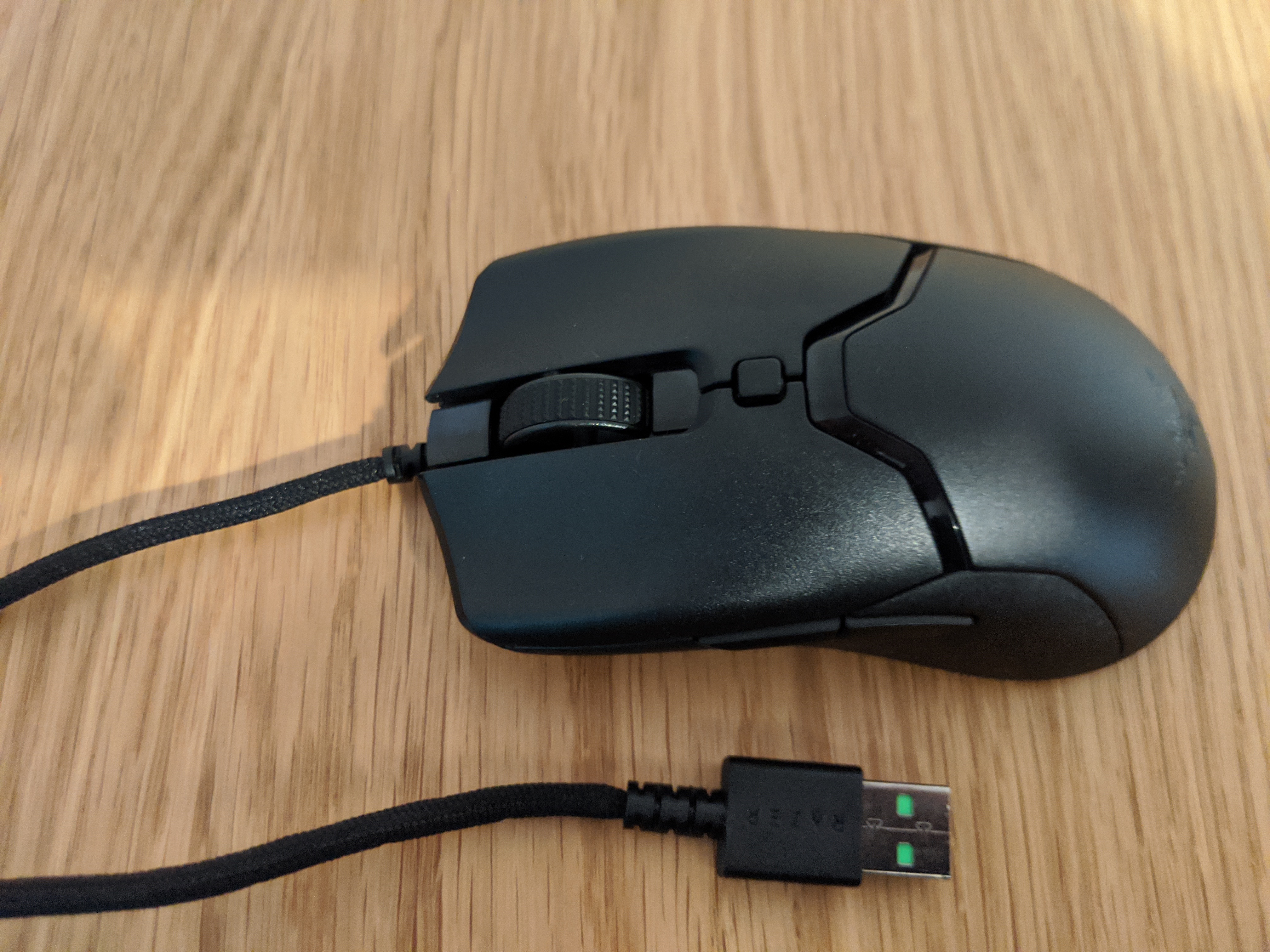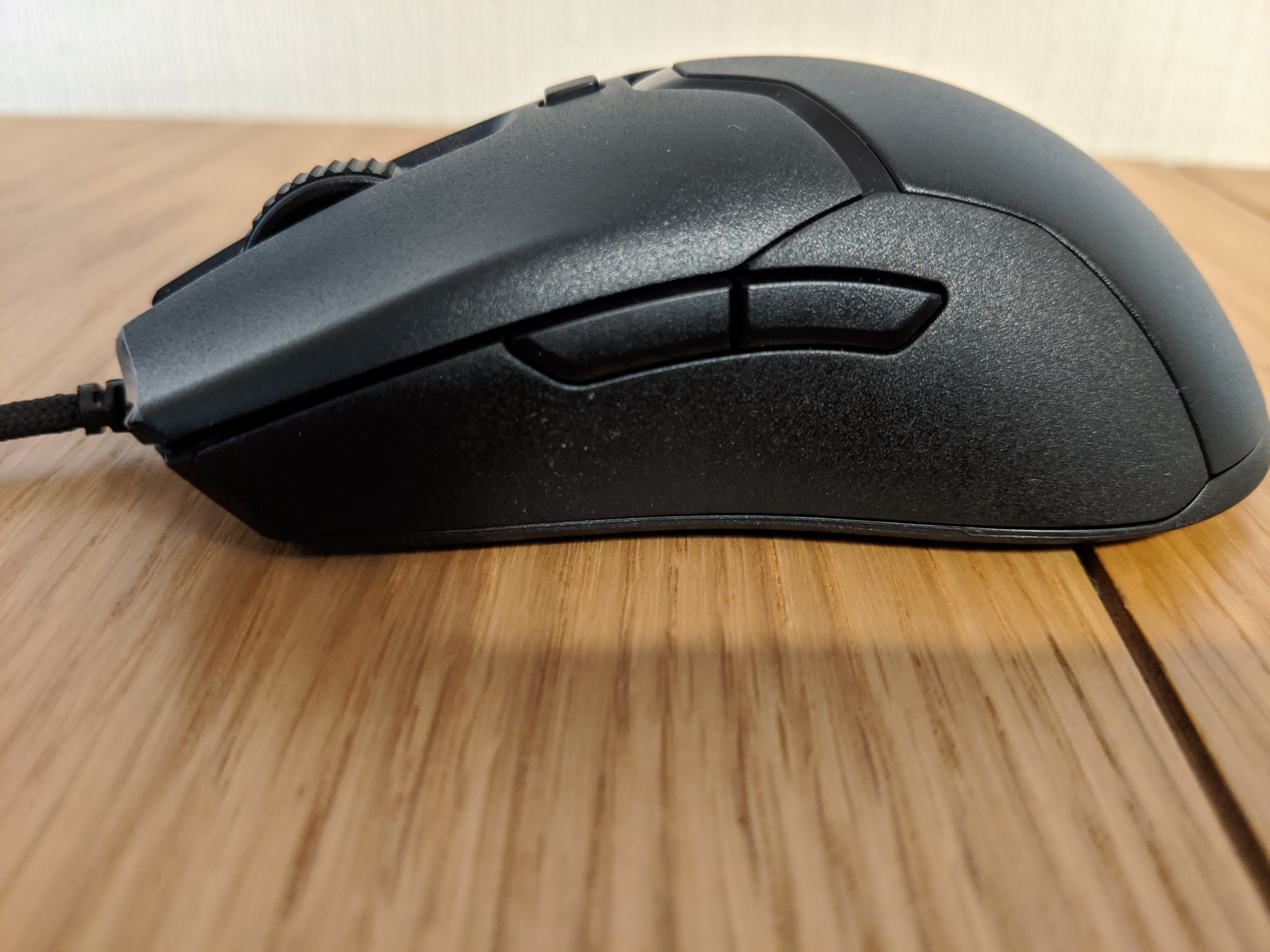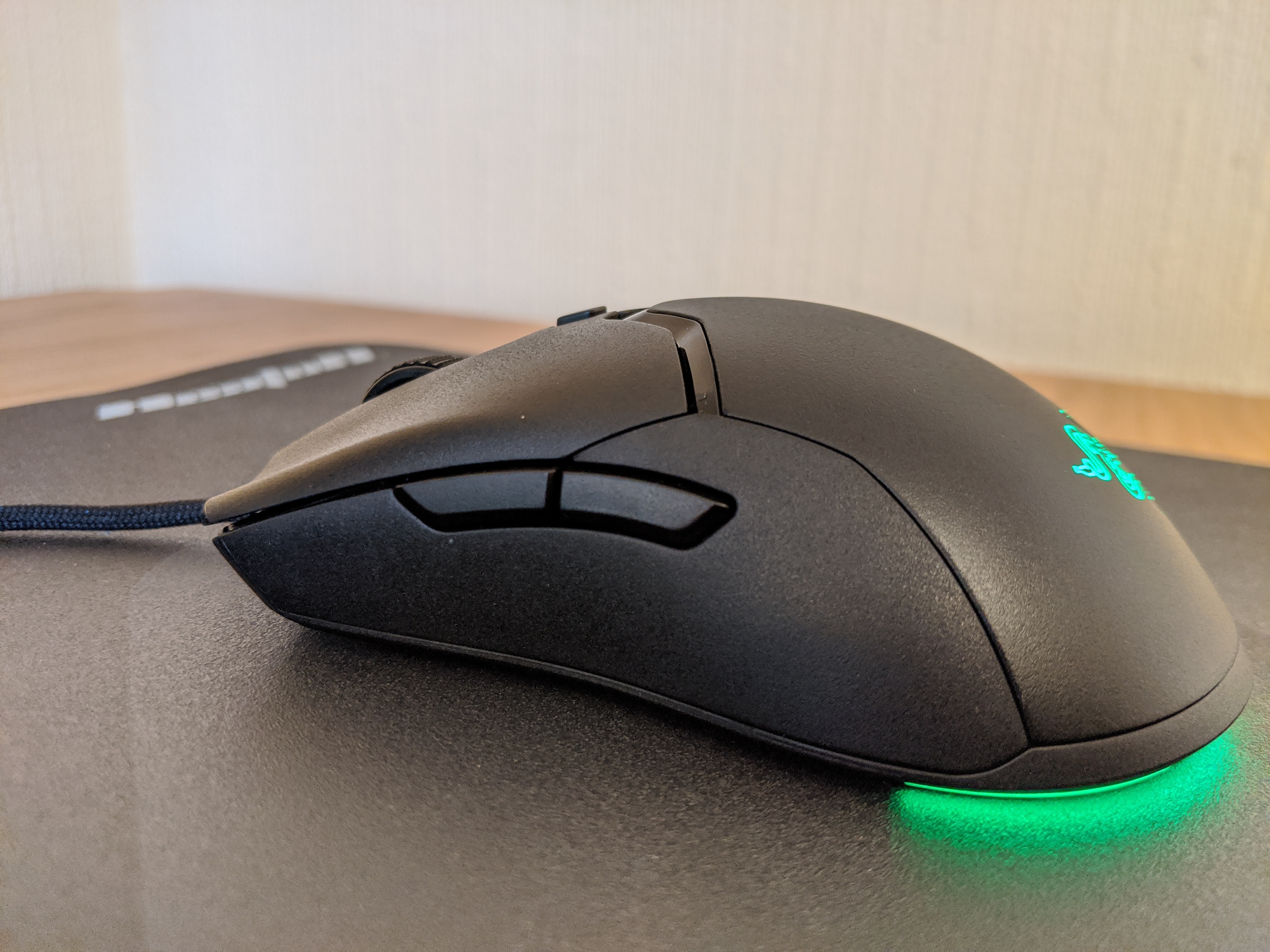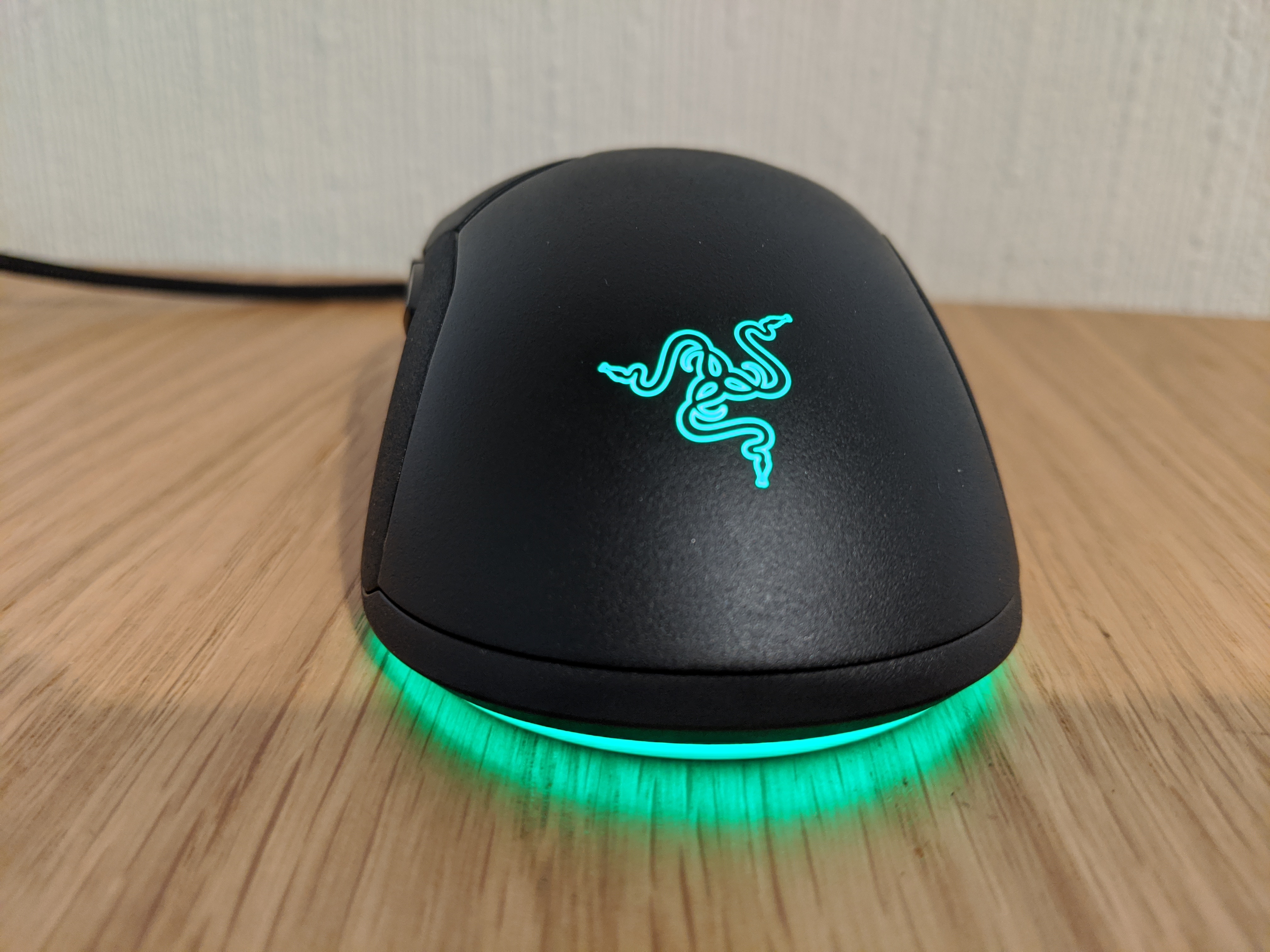Tom's Hardware Verdict
Small and (nearly) ambidextrous, the Viper Mini is for FPS players looking for a lightweight clicker with a subdued gaming aesthetic.
Pros
- +
Comfortable for all grip types
- +
Soft braided cable
- +
Five adjustable DPI steps
- +
Large PTFE feet aiding smooth movement
Cons
- -
No DPI indicator
- -
Plain looks
- -
Button layout limits it to first-person shooters
Why you can trust Tom's Hardware
When looking for the best gaming mouse, you’re met with varying schools of thought. There’s theRGB boom and mice adorned in tribal designs and more buttons than an ATC tower, ostensibly built to help us play better but often adding feature-bloat. There are also mice encouraged by the growth of eSports that pick function over form and jettison unnecessary features.
Razer’s Viper and now the Viper Mini ($39.99 / £39.99) released today are very much part of that no-nonsense approach. This new Mini model is 4mm narrower and 8mm shorter than the full-size Viper and as one of the smallest gaming mice on the market, those dimensions stand out on its spec sheet. But it’s also an incredibly light model (61g, to be exact) and one whose singularity of vision successfully nails its objective: give first-person shooter (FPS) players a mouse that lessens the barrier between their inputs and the game.
The Viper Mini looks to be a direct response to fan feedback on the bigger Viper, with several requests for a smaller model cropping up and one Reddit thread which even featured exact dimensions -- dimensions which, more or less, this Mini actually adheres to. But while plenty will find the Viper Mini adorable, it has some stiff competition in the lightweight, FPS department.
Razer Viper Mini Specs
| Sensor Type | Optical |
|---|---|
| Sensor Model | PixArt 3359 |
| Sensitivity | 8,500 CPI |
| Polling Rate | 1,000 Hz (1ms) |
| Lift-off Distance | 3mm |
| Programmable Buttons | 6 |
| LED Zones | 2 programmable RGB zones |
| Cable Length | 6.5 feet (2m) |
| Measurements (LxWxH) | 4.66 x 2.11 x 1.51 inches (118.3 x 53.5 x 38.3mm) |
| Weight | 0.13 pounds (61g) |
Design and Comfort



I love the smaller size and weight of Razer’s lightest mouse ever (0.13 pounds), measuring 4.66 x 2.11 x 1.51 inches, which is comparable to the honeycomb Glorious Model O Minus (0.13 pounds, 4.72 x 2.28 x 1.42 inches). That miniscule body lends itself really well to a fingertip grip style, where there’s clear air between the palm and palm rest but the index and middle fingers aren’t quite as curved and the palm’s base sits on the mouse pad. The Viper Mini is perfect under smaller hands and large pads with smaller digits, and as we’ll cover in gaming performance, brilliant for quick, precise movements across the mouse pad at low CPI settings.
That said, any grip type is welcome here since the Viper Mini has a symmetrical design. It’s a lot easier to accommodate larger hands on a small mouse than the other way around.
Razer tends to get it right with the aesthetics of its peripherals. The Viper Mini follows suit with the instantly recognizable green Razer branding. Little details like a subtle “Razer” inscription on the USB connector and the green insert are nice touches. But while the Viper Mini certainly isn’t ugly, I’m not totally enamoured with the bigger picture.
A lightweight black plastic with a matte finish covers nearly every part of the upper part of the Viper Mini. That plastic is broken only by a thin high-gloss dividing line between the buttons and the palm rest and a band of the same material running along both sides of the mouse wheel.
Get Tom's Hardware's best news and in-depth reviews, straight to your inbox.
The left and right mouse buttons are slightly scalloped. There was a small amount of lateral movement when I tried to wiggle them, but they felt sturdy when I was gaming. A CPI cycle button sits just below the rubberized textured mouse wheel, and the forward and back buttons sit at the usual place, just above your thumb on the right side. This is the only element of the design that isn’t ambidextrous, so if you can live without these buttons, the Viper Mini is a consideration for southpaws too.
Two RGB zones - one beneath the Razer trio of snakes logo and an arc at the bottom edge of the rear - light up and colorize an otherwise blackout design. It’s a restrained look and one built around sturdy construction materials, but I’m not a fan of the lines running across. The horizontal gloss band intrudes on an otherwise clean and minimal look. And the forward and back buttons break up the arc of the side panels, abruptly jutting in at a completely different angle. Those two elements combined give this mouse an awkward look.
The Viper Mini uses Razer’s “Speedflex” cable, which finds a real sweet spot between two designs. On one hand is the traditional braided fabric cable design that repels tangles but tends to retain kinks when looped. On the other hand is the looser cloth design, (which Glorious favors) that doesn’t retain kinks but has given some users connection stability dramas. The Speedflex sits in the middle and stayed kink-free without ever getting snagged on the edge of my desk.
The cable combined with a super-light weight and five DPI presets which sit saved on the Viper Mini’s on-board memory profile, make for a potent combo. It’s a bit annoying that there’s no visual indicator of your current DPI setting, though, meaning you have to go on feel alone unless you dive into the software.
Gaming Performance
As is always the case when a new FPS-focused mouse arrives, my first port of call with the Viper Mini was 3D Aim Trainer, a browser-based trainer which uses Windows’ mouse settings. If something’s awry with the polling rate or PixArt 3359 sensor accuracy, this is a good way to find out.
Having five CPI presets instead of the usual three or four you’ll find on other mice came in really handy here. Without having to delve into Razer’s software and dial in an exact preferred setting, you can find a preset that’s probably pretty close with a few taps of the DPI button.
And while some high-end gaming mice have sensors that go up to a 16,000 CPI, I don’t mind the Viper Mini’s maxing out at 8,500. As an 800 CPI player, I find going up to 16,000 totally useless and can’t be alone. But if you’re a pro gamer or need the fastest mouse around, you may want to seek something with greater range.
The Viper Mini is doubly well-suited to low DPI players for having such generously proportioned PTFE feet on the underside too. Flick-aiming or making larger movements to scan wide areas felt smooth, controlled and predictable. I was quickly able to calibrate the Viper Mini to my muscle memory and flickshot in CS:GO and other FPS titles.
The six-button layout is intended for shooters, so the mouse inevitably has limitations when you use it with other genres. MOBA and MMO players will need to migrate macros over to their keyboard (if you need help finding one, check out our Best Gaming Keyboards page) and perhaps won’t feel the benefits of its smooth flick-aiming potential and lightweight design.
Features and Software
Razer’s Synapse software is great for dialling in your preferred settings and RGB behavior but feels a bit bloated next to other peripheral companies’ offerings and forcing an account creation tied to an email address or social media account is absurd.
Still, Razer’s Chroma RGB controls are market-leading, and although there are just two RGB zones here, they’re sharply cut and highly configurable.
Cortex, the third program installed as part of the suite by default, is a curious combination of system performance enhancer, save game backup utility and, strangely, deal tracker. The performance gains offered will be marginal for most users, but if your game du jour is hovering at 59 frames per second, it might be the answer to your prayers.
Bottom Line
Long may the trend for lightweight, small ambidextrous gaming mice continue. Razer’s Viper Mini immediately feels like home to claw and fingertip grip gamers who primarily play shooters, and its kink-free cable will make it plenty of friends.
Compared to the Glorious Model O Minus, which is slightly lighter but slightly bigger in dimensions, it’s a dead heat. Both performed wonderfully in shooters and lack a clear visual DPI indicator. They look very different though. Which do you prefer: muted matte black with a bit of underglow or a honeycomb skeleton flooded with RGB? Additionally, the Model O Minus is $50-$60 depending on your design choice compared to the Viper Mini’s $40.
Since it’s a streamlined six-button mouse, the Viper Mini isn’t ideal for genres outside shooters. Anyone with a few CS:GO skins, a crippling Apex Legends habit or a refusal to move on from Quake Live, however, will really benefit from it.
MORE: Best Gaming Mice
MORE: Gaming Mice Reviews

